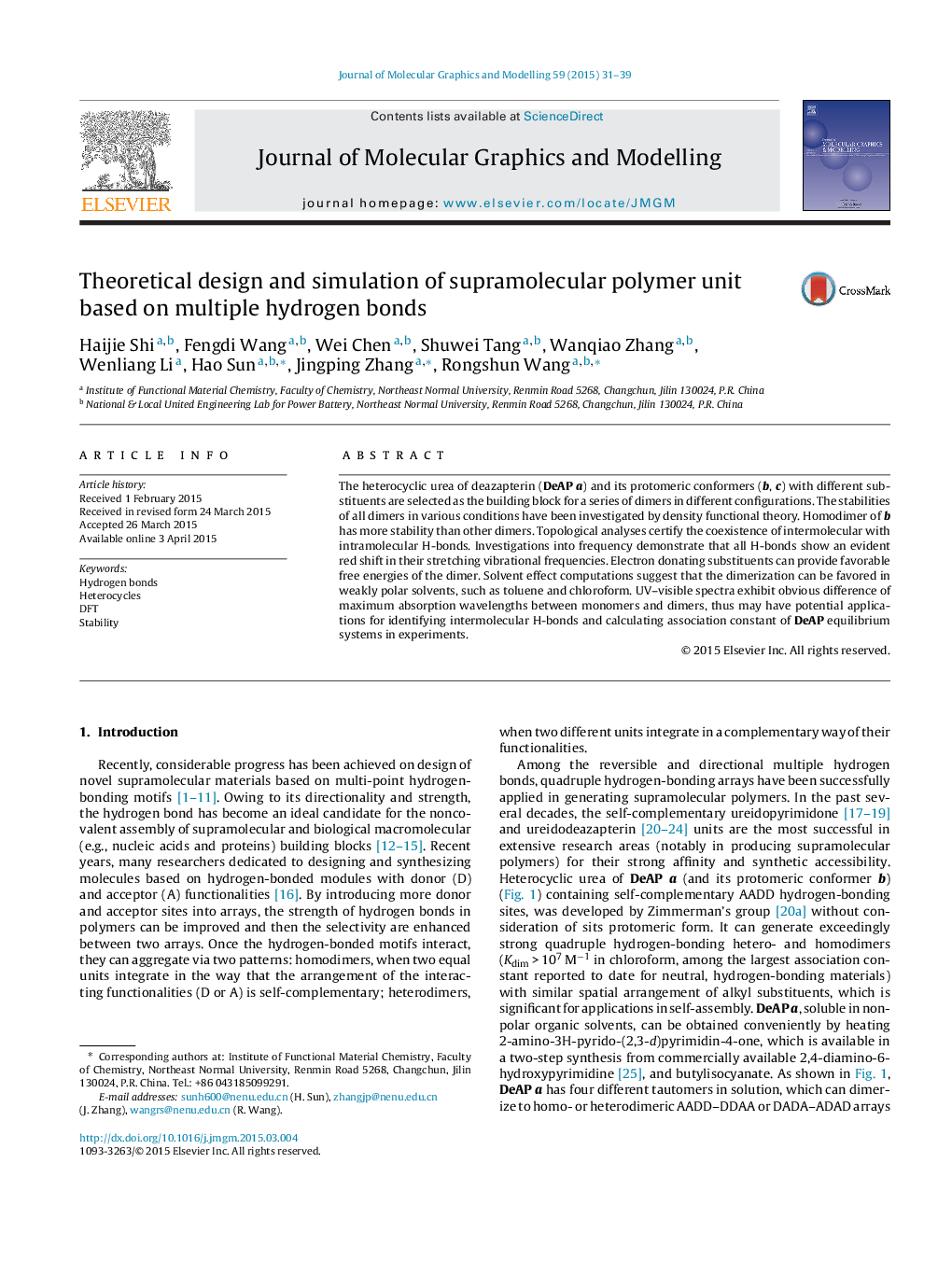| Article ID | Journal | Published Year | Pages | File Type |
|---|---|---|---|---|
| 443280 | Journal of Molecular Graphics and Modelling | 2015 | 9 Pages |
•Homodimer of DeAPb has more stability than other dimers in various conditions.•Electron donating substituents can provide favorable free energies of dimerization.•The dimerization can be favored in weakly polar solvents.•Electron transfers from acceptor to donor owing to hyperconjugative interactions.•UV absorption spectra show evident difference of λmax between monomers and dimers.
The heterocyclic urea of deazapterin (DeAPa) and its protomeric conformers (b, c) with different substituents are selected as the building block for a series of dimers in different configurations. The stabilities of all dimers in various conditions have been investigated by density functional theory. Homodimer of b has more stability than other dimers. Topological analyses certify the coexistence of intermolecular with intramolecular H-bonds. Investigations into frequency demonstrate that all H-bonds show an evident red shift in their stretching vibrational frequencies. Electron donating substituents can provide favorable free energies of the dimer. Solvent effect computations suggest that the dimerization can be favored in weakly polar solvents, such as toluene and chloroform. UV–visible spectra exhibit obvious difference of maximum absorption wavelengths between monomers and dimers, thus may have potential applications for identifying intermolecular H-bonds and calculating association constant of DeAP equilibrium systems in experiments.
Graphical abstractIntermolecular and intramolecular H-bonds coexist in dimers based on DeAP. Electron donating substituents and weakly polar solvents can promote the dimerization. Electron transfers from lone pairs of electron of O/N atoms in acceptor to NH bonds in donor as a result of hyperconjugative interactions. UV–visible spectra exhibit obvious difference of maximum absorption wavelengths between monomers and dimers.Figure optionsDownload full-size imageDownload high-quality image (150 K)Download as PowerPoint slide
